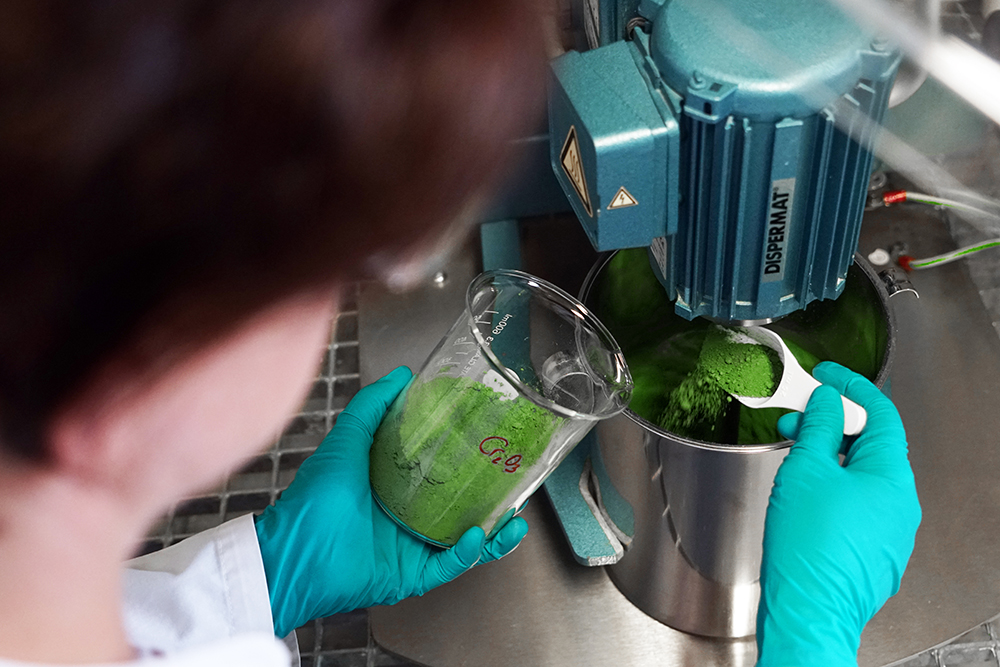Robust and functional – surface finishing by suspension spraying
With thermally sprayed particle suspensions, previously unattained layer qualities can be achieved. The complete solution for surface finishing of heavily stressed components is now being put into practice by Fraunhofer researchers from Dresden. Industrial applications benefit from increased process stability and reliability.

Rollers with precise printing performance in the paper industry or offshore equipment in aggressive saltwater – coatings protect these components even under harsh conditions. In particular, thermal coating processes such as atmospheric plasma spraying (APS) or high velocity oxygen fuel coating (HVOF) have been used so far. On the basis of ceramic or metal powders insulation, corrosion and wear protection layers between 100 and 500 μm can be applied to machine and plant components. Although the powder particles used are as fine as flour and the layer thinner than a chip card, such a surface has a high roughness under the microscope. In order to achieve the aimed surface quality, the sprayed components therefore have often to be treated or sealed mechanically. Other coating technologies, such as chemical or physical vapor deposition (CVD, PVD) allow ultra-thin films below 10 μm. However, these methods can not be used to coat large surfaces. Rather, only small tool inserts benefit from a CVD or PVD coating.
Surfaces with thermally sprayed suspension layers between 10 und 50 μm
Researchers from the Fraunhofer Institute for Ceramic Technologies and Systems IKTS have now created the preconditions for producing extremely smooth, robust layers on large-size components – without time-consuming and cost-intensive post-processing steps. Besides the powders used so far, they developed suspensions for thermal spraying, and thus achieve new coating qualities and properties. For this purpose, even finer submicron and nanoparticles, which can not be sprayed as pure powder, are dispersed in water or organic solvents. “Thermal suspension spraying produces extremely robust, thin films between 10 and 50 μm. Thanks to homogeneous suspensions, we reduce both previous roughnesses of more than 5 to 1 μm and the materials consumption,“ explains Dr. Annegret Potthoff, head of the group Powder and Suspension Characterization at Fraunhofer IKTS. For the first time even functional surfaces are possible, too. They can, for example, be provided with photocatalytically active layers, which permanently degrade drug residues in waste water treatment plants.
From the feedstock to the optimized component
In the lab accredited according to DIN EN ISO / EC 17025 at Fraunhofer IKTS, the suspensions are individually adapted for each application concerning solid content, grain size distribution and viscosity. “In successful cooperation with the Fraunhofer Institute for Material and Beam Technology IWS, we were able to adapt the entire process chain and existing plant technology to suspensions. The hardware components developed at IWS, such as suspension conveyors and injectors, can be easily integrated into existing spraying systems,“ says Dr. Potthoff. In addition to the different ceramic materials such as chromium, alumina or zirconium oxide, tungsten carbide can also be thermally sprayed for the first time. In addition, the technique allows graded layer systems to combine, for example, thermal and mechanical properties.